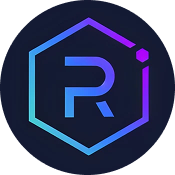In the ever-evolving realm of DeFi, two projects stand out for their innovative approaches to maximizing user assets—Yearn Finance, the yield optimizer, and Rocket Pool, the decentralized ETH staking protocol. While both operate within the decentralized finance universe, their core functionalities and target audiences differ significantly. This comparison delves into their architecture, features, security, and usability to help crypto enthusiasts understand which platform aligns best with their investment strategies and risk appetite.
Short on time? Jump to Yearn Finance vs Rocket Pool Comparison
Understanding Yearn Finance and Rocket Pool ?
Yearn.Finance, launched in 2020 by Andre Cronje, revolutionized DeFi with its automated yield aggregation protocol built on Ethereum. It seeks to optimize users' returns by automatically moving funds across various DeFi protocols like Aave, Curve, and Compound, based on the highest yield opportunities available. Users interact with Yearn by depositing assets into vaults, which then deploy strategies to generate passive income. Its native token, YFI, empowers governance and community-driven development, making it a cornerstone of DeFi yield farming.
Rocket Pool, on the other hand, emerged as a decentralized ETH staking solution designed to lower the barrier for participation in Ethereum 2.0. Unlike traditional validators requiring 32 ETH, Rocket Pool allows users to stake as little as 16 ETH, democratizing access to staking rewards. It leverages smart contracts and a pledge node system to facilitate secure, trustless staking, with RPL tokens incentivizing participation and decentralization. Rocket Pool's approach emphasizes security, liquidity, and community governance, making it a key player in ETH's staking ecosystem.
Both platforms leverage smart contract technology to automate complex processes—Yearn with its yield optimization vaults, and Rocket Pool with its pledge and node management protocols. They address different niches within DeFi: Yearn maximizes yield across multiple protocols, while Rocket Pool focuses on secure, accessible ETH staking. Their architectures reflect their objectives: Yearn's modular, strategy-focused design contrasts with Rocket Pool’s pledge-node ecosystem, each offering unique advantages and challenges.
Understanding the foundational principles and operational mechanisms of these platforms provides clarity on their roles in the broader DeFi landscape. Yearn's focus on yield farming and liquidity management complements Rocket Pool’s emphasis on decentralized staking and network security. This comparison aims to clarify their technological underpinnings, security measures, governance models, and user experience to guide crypto investors in making informed decisions.
Key Differences Between Yearn Finance and Rocket Pool
Primary Functionality
- Yearn Finance: Yearn Finance acts as an automated yield aggregator, continuously reallocating user funds across multiple DeFi protocols to optimize returns. Its vault system employs sophisticated algorithms to adapt to market conditions, making it ideal for users seeking passive income through yield farming. The platform's strategy-oriented approach allows users to participate in various yield strategies, from stablecoin lending to liquidity provision, all managed via smart contracts that minimize manual intervention.
- Rocket Pool: Rocket Pool is primarily a decentralized ETH staking protocol that enables users to participate in Ethereum 2.0 validation with a minimum of 16 ETH. It employs pledge nodes and liquid staking tokens (rETH) to facilitate secure, trustless staking while maintaining liquidity. Rocket Pool's core focus is on securing the Ethereum network through decentralized validator operation, offering a straightforward pathway for users to earn staking rewards without the high threshold of 32 ETH.
Core Technology Stack
- Yearn Finance: Yearn's architecture comprises vaults, strategies, and governance tokens, built on Ethereum and compatible chains. Its modular design supports a wide range of strategies, each optimized for specific assets or risk profiles. The platform leverages ERC-20 tokens, smart contracts, and oracles to automate yield optimization, with a focus on security and upgradeability through community governance and standards like ERC-4626.
- Rocket Pool: Rocket Pool’s technology revolves around smart contracts, pledge nodes, and liquidity tokens. Its decentralized node operator model allows anyone with 16 ETH to run a validator node, backed by collateral and RPL incentives. The protocol employs a DAO for governance, ensuring community control over parameters and upgrades. Its smart contract ecosystem manages pledge pools, reward distribution, and liquid rETH tokens, emphasizing security, decentralization, and liquidity.
Security and Decentralization
- Yearn Finance: Yearn prioritizes security through audits, community governance, and modular architecture that isolates core functions. Although it has experienced security incidents, continuous improvements and community oversight aim to mitigate risks. Its decentralized governance model via YFI token holders allows collective decision-making, fostering resilience and transparency in its operations.
- Rocket Pool: Rocket Pool emphasizes security through rigorous audits, pledge insurance, and a DAO-managed protocol. Its decentralized node operation model reduces reliance on centralized validators, enhancing network security and censorship resistance. The use of collateralized pledge nodes and insurance mechanisms provides additional safeguards against malicious activity or node failure, making it a robust staking solution.
User Accessibility and Experience
- Yearn Finance: Yearn simplifies yield farming by offering user-friendly vault interfaces and integrations with multiple DeFi protocols. Users deposit assets via popular wallets like MetaMask or Ledger, with the platform handling strategy selection and rebalancing. Its multi-chain support expands accessibility, although navigating strategies and understanding vault dynamics require some DeFi literacy.
- Rocket Pool: Rocket Pool lowers the entry barrier for ETH staking by enabling users to participate with just 16 ETH or less through pledge pools. Its liquidity token, rETH, provides liquidity and flexibility, allowing users to trade or use assets across DeFi. The onboarding process involves interacting with smart contracts and understanding staking mechanics, which may be more technical but provides direct participation in Ethereum’s security.
Governance and Tokenomics
- Yearn Finance: Yearn’s governance is driven by its YFI token, which grants voting rights and proposal power. Community members stake YFI to influence platform upgrades, fee structures, and strategy additions. The tokenomics aim to decentralize decision-making and incentivize active participation, fostering a community-led ecosystem that adapts to market needs.
- Rocket Pool: Rocket Pool’s governance involves RPL tokens, used for staking, voting, and protocol upgrades. Token incentives reward node operators and users, aligning interests towards decentralization and protocol security. Its DAO structure allows community proposals and parameter adjustments, maintaining transparency and collective control.
Yearn Finance vs Rocket Pool Comparison
| Feature | ✅ Yearn Finance | ✅ Rocket Pool |
|---|---|---|
| Primary Function | Automated yield aggregation across DeFi protocols to maximize returns. | Decentralized ETH staking and validator infrastructure. |
| Minimum Deposit/Participation | Varies by strategy, typically a few hundred USD worth of assets. | 16 ETH for pledge nodes; as little as 0.01 ETH for staking via liquidity pools. |
| Core Technology | Vaults, strategies, ERC-4626 standard, multi-chain support. | Smart contracts, pledge nodes, liquidity tokens, DAO governance. |
| Security Model | Audited smart contracts, community governance, risk of exploits. | Audited contracts, pledge insurance, decentralized node operation. |
| Liquidity & Flexibility | Funds are locked in strategies; liquidity depends on strategy design. | rETH tokens are tradable, providing liquidity during staking. |
| Governance Model | Decentralized via YFI token voting. | Decentralized via RPL token voting and DAO. |
Ideal For
Choose Yearn Finance: Crypto investors seeking automated yield farming and diverse DeFi strategies.
Choose Rocket Pool: Ethereum enthusiasts interested in accessible, decentralized staking with liquidity options.
Conclusion: Yearn Finance vs Rocket Pool
Yearn Finance and Rocket Pool exemplify the diverse capabilities within DeFi—one optimizing yield across protocols, the other democratizing Ethereum staking. Yearn’s strategy-driven vaults cater to investors seeking passive income through complex, automated DeFi strategies, while Rocket Pool’s pledge node ecosystem lowers entry barriers for ETH staking and enhances network decentralization. Both platforms emphasize security, community governance, and liquidity, yet serve different user needs and risk profiles.
Choosing between them depends on individual priorities: if maximizing yield with minimal oversight is your goal, Yearn offers a flexible, multi-chain platform. If participating in Ethereum’s security and earning staking rewards with lower thresholds appeals to you, Rocket Pool provides an innovative, community-driven solution. Ultimately, both projects underscore the power of decentralization and automation, pushing the boundaries of what’s possible in the evolving DeFi landscape.






